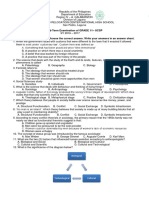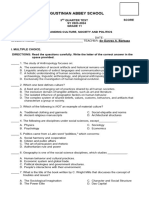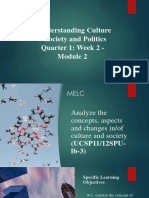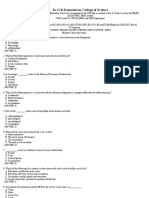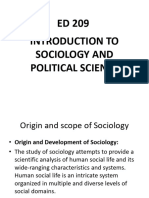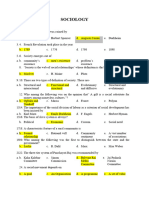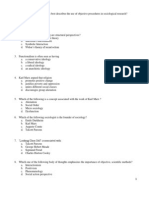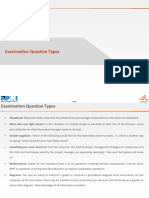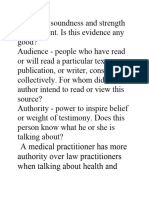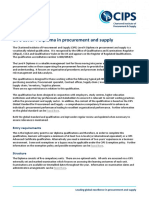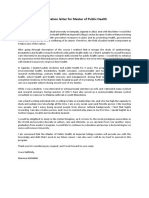0% found this document useful (0 votes)
35 views15 pagesRural Sociology Essentials
1. The document discusses key concepts in rural sociology and social groups including how sociology originated in France, the definition of rural sociology, and types of social groups.
2. It also covers topics like social stratification, customs, folkways, mores, taboos, rituals, and traditions. Specific elements of culture that help define values and norms are discussed.
3. The types of social stratification in rural societies and how groups are either static or dynamic are summarized. Primary and secondary groups as well as the basis for social stratification based on things like class, caste, and economic status are defined at a high level.
Uploaded by
Prince RazCopyright
© © All Rights Reserved
We take content rights seriously. If you suspect this is your content, claim it here.
Available Formats
Download as PDF, TXT or read online on Scribd
0% found this document useful (0 votes)
35 views15 pagesRural Sociology Essentials
1. The document discusses key concepts in rural sociology and social groups including how sociology originated in France, the definition of rural sociology, and types of social groups.
2. It also covers topics like social stratification, customs, folkways, mores, taboos, rituals, and traditions. Specific elements of culture that help define values and norms are discussed.
3. The types of social stratification in rural societies and how groups are either static or dynamic are summarized. Primary and secondary groups as well as the basis for social stratification based on things like class, caste, and economic status are defined at a high level.
Uploaded by
Prince RazCopyright
© © All Rights Reserved
We take content rights seriously. If you suspect this is your content, claim it here.
Available Formats
Download as PDF, TXT or read online on Scribd
/ 15



















